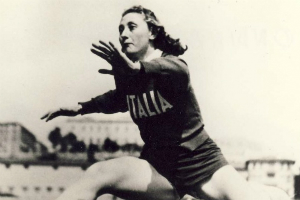José João Altafini - footballer who made history
Forward tamed Eusebio to give Italy first European Cup
Supporters of AC Milan took to the streets to celebrate on this day in 1963 after José João Altafini's goals secured an historic victory in the European Cup. Milan beat Benfica at Wembley Stadium in London to become the first Italian team to win the trophy. Until then the European Cup had been dominated by Real Madrid, who were champions for five years in a row after the competition was launched in 1955-56, with the great Eusebio's Benfica winning in 1961 and 1962. At half-time at Wembley in 1963, Milan looked set to provide another near-miss story for Italy, trailing to a Eusebio goal as Benfica closed on a third successive title. The rossoneri had lost to Real Madrid five years earlier, 12 months after the Spanish giants brushed aside Fiorentina in the final. But 24-year-old Altafini, who became one of Serie A’s most prolific all-time goalscorers, refused to be cowed. He netted in the 58th and 66th minutes, sparking joyous scenes in Milan and starting a period of European dominance for the city, with AC’s rivals Internazionale winning the next two tournaments. The Milan team that night in London boasted two future Italy managers in Cesare Maldini and Giovanni Trapattoni, as well as the great Gianni Rivera, but Altafini was the star. Read more…
___________________________________________________________
Trevi Fountain inaugurated
Famous fountain now helps raise money for the poor
Rome’s iconic Trevi Fountain - Fontana di Trevi - was officially opened by Pope Clement XIII on this day in 1762. Standing at more than 26 metres high and 49 metres wide it is the largest Baroque fountain in Rome and probably the most famous fountain in the world. It has featured in films such as La Dolce Vita and Three Coins in the Fountain. For more than 400 years a fountain served Rome at the junction of three roads, tre vie, using water from one of Ancient Rome’s aqueducts. In 1629 Pope Urban VIII asked Gian Lorenzo Bernini to draw up possible renovations but the project was abandoned when the pope died. In 1730 Pope Clement XII organised a contest to design a new fountain. The Florentine Alessandro Galilei originally won but there was such an outcry in Rome that the commission was eventually awarded to a Roman, Nicola Salvi. Work on the fountain began in 1732 but Salvi died in 1751 when it was only half finished. Made from Travertine stone quarried in Tivoli near Rome, the fountain was completed by Giuseppe Pannini, with Oceanus (god of all water), designed by Pietro Bracci, set in the central niche. Read more…
____________________________________________________________
Giulia Grisi - operatic soprano
Officer’s daughter became a star on three continents
The opera singer Giulia Grisi, one of the leading sopranos of the 19th century, was born on this day in 1811 in Milan. Renowned for the smooth sweetness of her voice, Grisi sang to full houses in Europe, the United States and South America during a career spanning 30 years in which composers such as Vincenzo Bellini and Gaetano Donizetti created roles especially for her. These included Elvira in Bellini’s final opera, I puritani, in which Grisi appeared alongside the great tenor Giovanni Battista Rubini, the bass Luigi Lablache and the baritone Antonio Tamburini when the work premiered in Paris in 1835. The opera was such a success that whenever the four singers performed together subsequently they were known as the “Puritani quartet”. Grisi was also the first soprano cast in the role of Adalgisa in Bellini’s Norma in Milan in 1831, playing opposite Giuditta Pasta in the title role. Donizetti wrote the parts of Norina and Ernesto in his 1843 work Don Pasquale for Grisi and her future husband, the tenor Giovanni Matteo De Candia, usually known by his stage name of Giovanni Mario. Lablache and Tamburini again starred with her in the Paris premiere. Read more…



























